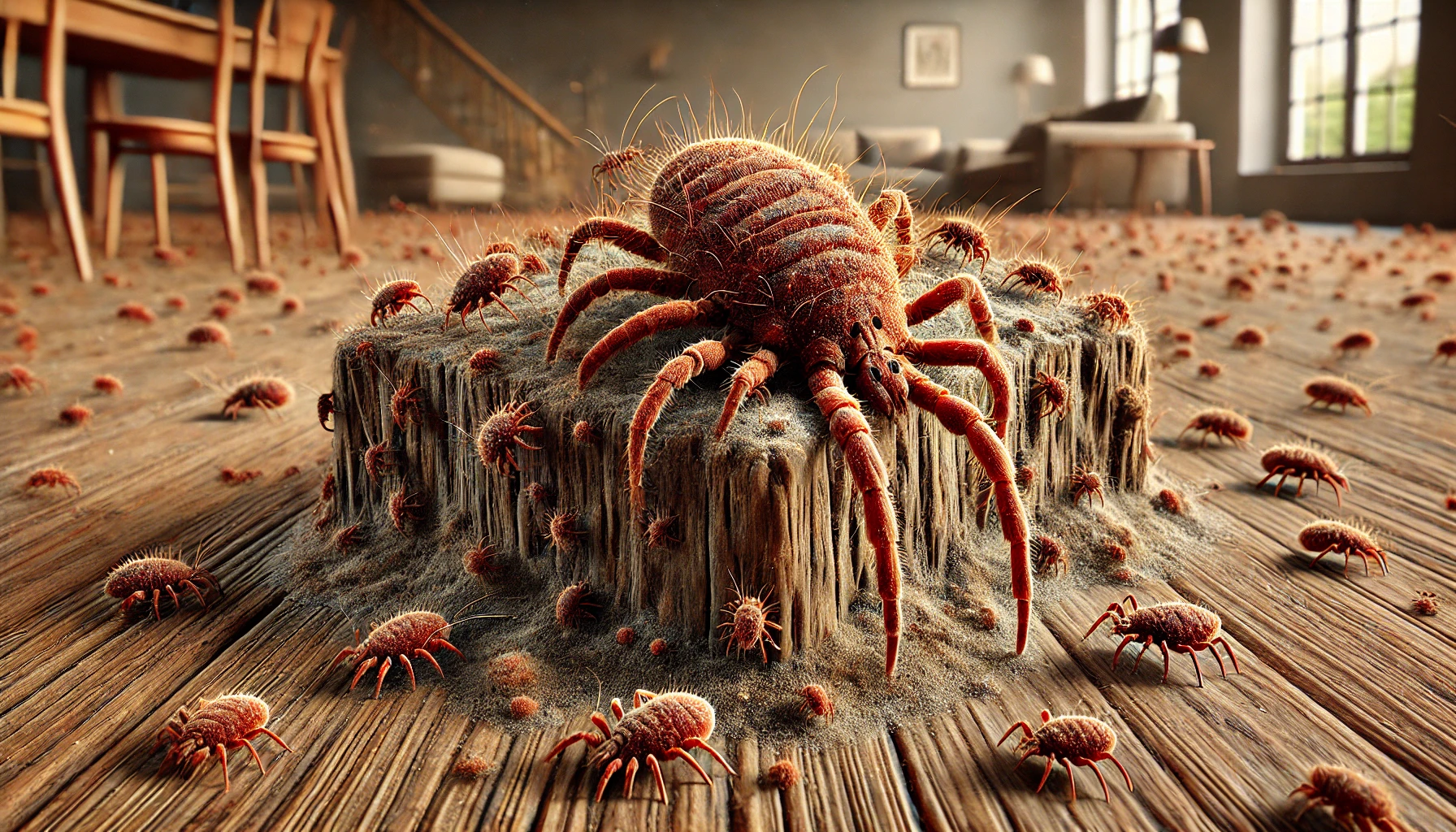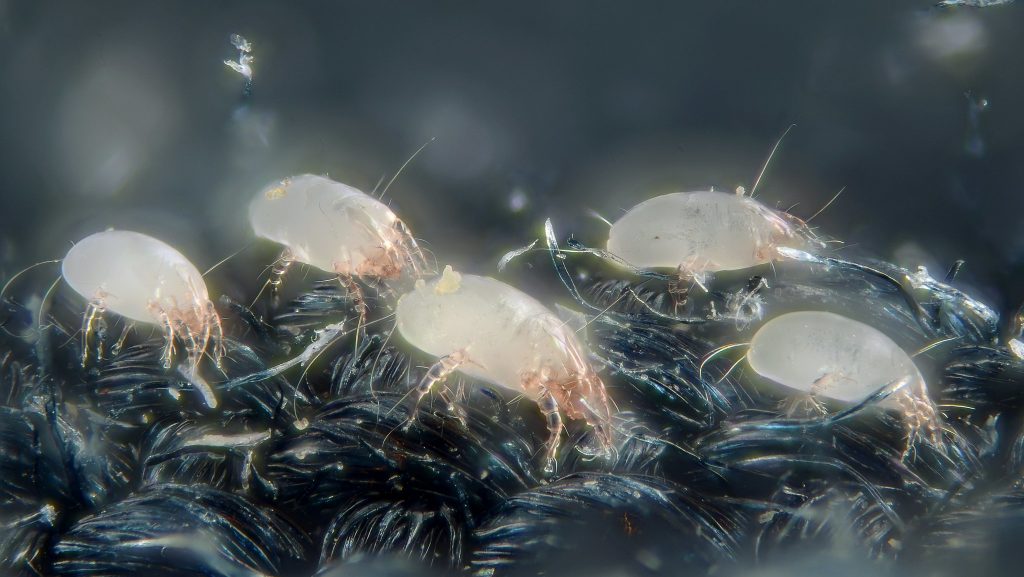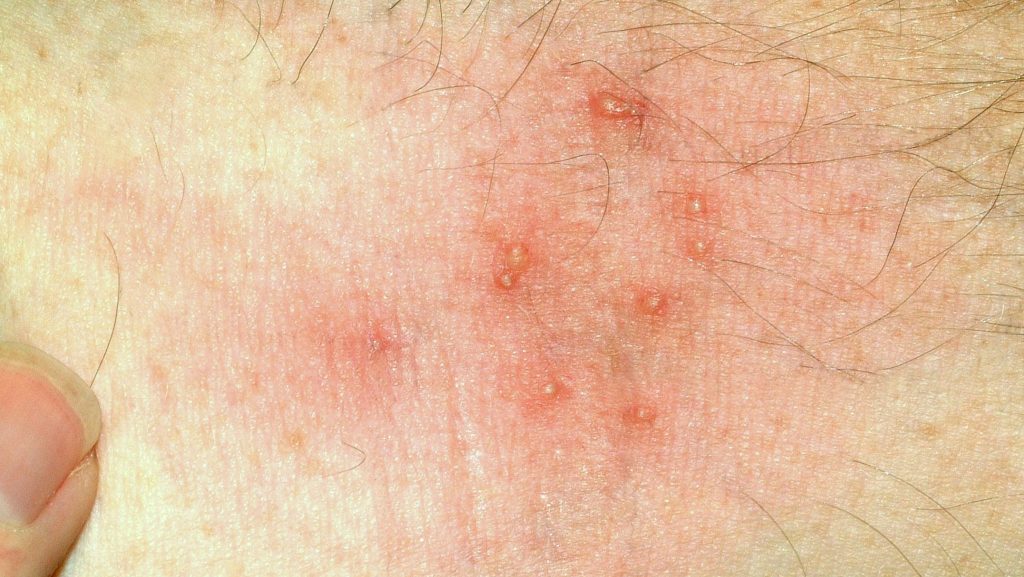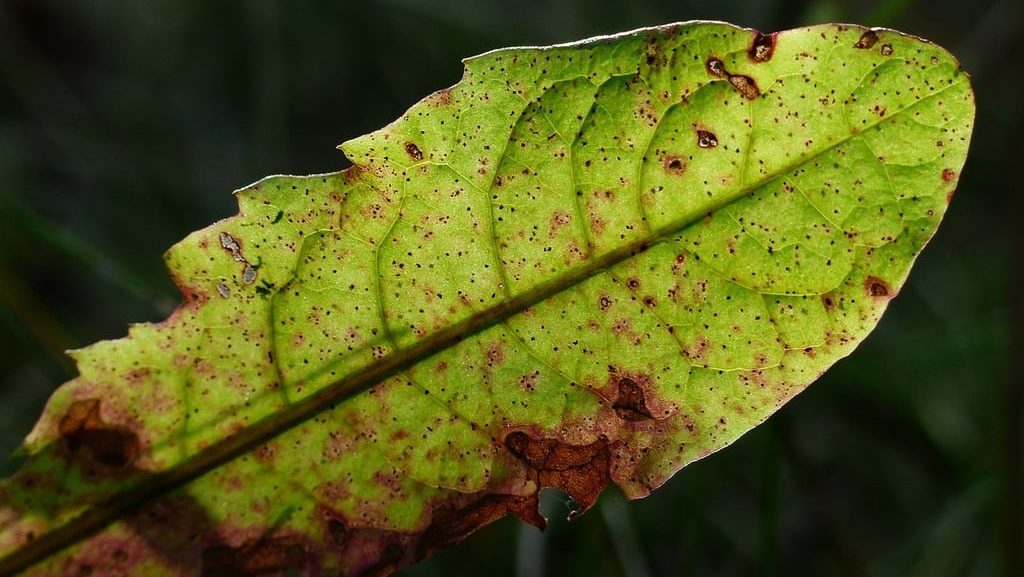Key Takeaways
- Identify mite infestations through skin irritations (itching, rashes), respiratory symptoms (sneezing, congestion), and environmental signs (webbing, plant damage).
- Treat mites by regularly vacuuming, washing bedding in hot water, controlling indoor humidity, and using medical or plant-safe treatments as needed.
- Prevent mites by maintaining cleanliness, reducing humidity, inspecting plants, and grooming pets regularly.
 Mites are microscopic creatures that often go unnoticed until they cause irritation or visible damage. While they serve essential roles in ecosystems, certain mites can become pests in homes, on pets, or even on humans. Recognizing what are the signs of mites, understanding mites infestation symptoms and knowing how to tackle them is crucial for maintaining a healthy living environment.
Mites are microscopic creatures that often go unnoticed until they cause irritation or visible damage. While they serve essential roles in ecosystems, certain mites can become pests in homes, on pets, or even on humans. Recognizing what are the signs of mites, understanding mites infestation symptoms and knowing how to tackle them is crucial for maintaining a healthy living environment.


Not getting a solution?
Get your free pest control estimate today!What Are the Signs of Mites?
Identifying the signs of mite infestation can help you remove mite infestations early. These signs often depend on the type of mite and where they are found.Signs of Mite Infestation
-
Skin Irritations: Red bumps, rashes, or small itchy clusters resembling mosquito bites may indicate mites. Intense itching at night is a hallmark of scabies mites burrowing under the skin. Persistent scratching can lead to sores or infections.
-
Respiratory Symptoms: Dust mites release allergens that cause sneezing, nasal congestion, runny noses, and watery eyes. Those with asthma or allergies may experience worsened symptoms, including wheezing and shortness of breath, especially in mite-prone areas like beds and carpets.
-
Environmental Signs: Black or white specks, often mistaken for dirt, may appear on bedding, curtains, or upholstery. Spider mites leave web-like strands on plants and cause leaves to turn yellow or brown. Clover mites may form visible clusters along windowsills or walls.
Mites Infestation Symptoms
Mite infestations can cause a variety of symptoms that affect your skin, respiratory system, and general well-being. Here’s a breakdown of mites infestation symptoms to watch out for:
Skin Symptoms
Mite infestations on human skin are often indicated by intense itching, especially at night, red rashes, and small raised bumps. Scabies mites burrow under the skin, leaving visible tracks, rashes, or bumps that can lead to sores if scratched excessively. Demodex mites, which live in hair follicles, can cause irritation and acne-like outbreaks on the face, particularly around the eyes, nose, and chin. In severe cases, these mites may also lead to eye discomfort and inflammation, known as blepharitis.
Respiratory Symptoms
Dust mites can trigger respiratory problems by releasing airborne allergens. Symptoms include sneezing, nasal congestion, a persistent runny nose, and watery eyes. People with asthma or allergies are more susceptible, often experiencing worsened symptoms like coughing, wheezing, and difficulty breathing. These symptoms may be more prominent in the morning, as dust mites are most active in bedding, pillows, and mattresses where humans sleep.
Plant Damage
Plants infested with spider mites exhibit clear signs of damage, such as yellow or brown spots on leaves. Over time, leaves may dry up, curl, or fall off entirely. In severe cases, spider mites produce thin, web-like strands on plant stems and leaves. Infestations of this kind often lead to stunted plant growth and eventual defoliation if left untreated. Visit our Species, Mite Control, and DIY Guide sections for additional resources on mites and ways to tackle a mite infestation.Treating Mite Infestations
Once an infestation is identified, it’s essential to act quickly to eliminate mites and prevent them from returning. Treating mite infestations involves addressing both the environment and the symptoms they cause. Here are a few tips you can use to treat mite infestation at home:How to Treat Mite Infestation in Homes
-
Vacuum carpets, rugs, furniture, curtains, and mattresses, focusing on crevices.
-
Use a HEPA-filter vacuum to trap mites and allergens.
-
Wash bedding, pillowcases, and soft furnishings in hot water (130°F/54°C).
-
Dry fabrics on high heat to kill mites and eggs.
-
Maintain indoor humidity below 50% with dehumidifiers or AC.
-
Ventilate the home regularly to reduce moisture.
 How to Treat Mites on Pets
Use pet-safe medicated shampoos formulated to eliminate mites. Ensure to lather the shampoo thoroughly and leave it on the pet’s fur for the recommended time before rinsing.
If infestations persist, consult a veterinarian for professional diagnosis and treatment. The vet may recommend oral medications, topical treatments, or injectable medications to eliminate mites from pets. Regular grooming and flea treatments can also prevent future infestations.
How to Treat Mites on Pets
Use pet-safe medicated shampoos formulated to eliminate mites. Ensure to lather the shampoo thoroughly and leave it on the pet’s fur for the recommended time before rinsing.
If infestations persist, consult a veterinarian for professional diagnosis and treatment. The vet may recommend oral medications, topical treatments, or injectable medications to eliminate mites from pets. Regular grooming and flea treatments can also prevent future infestations.
Methods to Prevent a Mite Infestation
-
Keep your home clean and clutter-free to reduce mite hiding spots.
-
Wash and change bedding, curtains, and upholstery regularly.
-
Use dehumidifiers or air conditioners to maintain humidity levels below 50%.
-
Inspect plants regularly for signs of spider mites and treat them immediately.
-
Groom pets frequently to detect and prevent mite infestations early.
Myths and Facts About Mites
| Myth | Fact |
|---|---|
| Mites only infest dirty homes. | Mites can thrive in clean environments as long as they find moisture and food sources. |
| All mites bite humans. | Not all mites bite; some cause allergic reactions without direct contact. |
| You can completely eliminate mites from your home. | While complete eradication is nearly impossible, their population can be managed effectively with proper measures. |
| Mites are always visible. | Most mites are microscopic and can only be detected through their symptoms or environmental damage. |
| Mites do not affect plant health. | Spider mites can severely damage plants, causing yellowing leaves and defoliation. |





